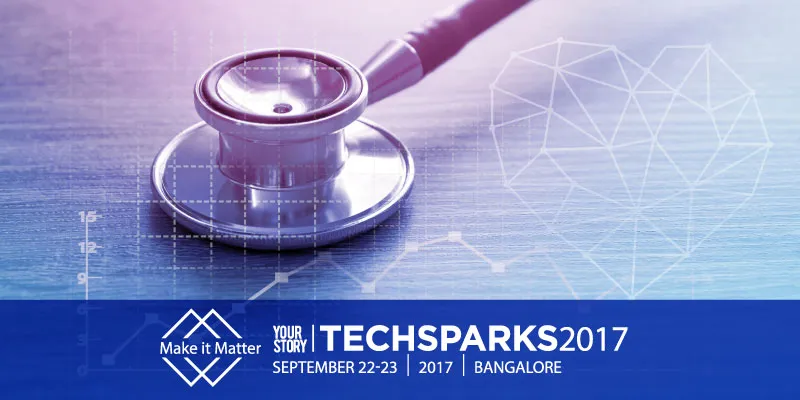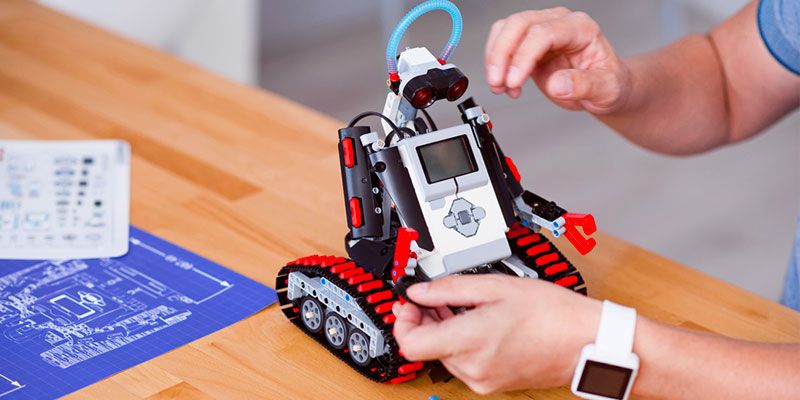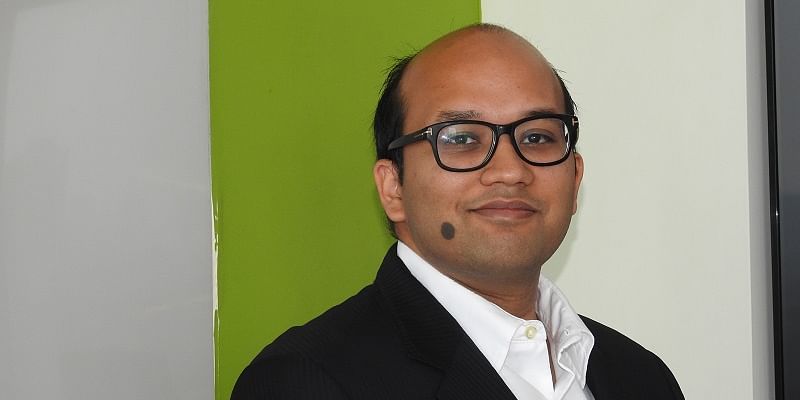The IoT in India: devices will soon run your life, at work or home
It may seem straight out of sci-fi, but a Nasscom and Deloitte report says India will soon have 1.9 billion IoT devices installed, with a market size of $9 billion.
Key highlights
- Devices will use information to prescribe and predict what next
- Startups will create IPs that will be picked up by large companies
- Data sharing and privacy debate will continue
- Regulation cannot keep pace with devices studying human habits
- The end-of-the-State debate will create a new race
- IoT deliver's efficiency at home and industry, but it will be accessed by the creamy layer of society.
What is the nature of being? What is creation? These fundamental questions have ushered in an era of unprecedented technological growth over the last 100 years.
Yuval Noah Harari, the author of Sapiens, says the human brain is nothing but “a system where algorithms make decisions”. However, he adds that very soon we will give away that power to networks of intelligent machines to perform tasks better than us. This argument is fundamental to the rise of the Internet-of-Things or IoT where devices are programmed to serve humans by using data to operate mundane tasks at home, in the city, in offices, and on the shop floor.
One need not look any further than the Smartron office in Hyderabad to see how IoT is playing out in India.
When an employee walks to the office door, facial recognition software opens the door for her. As she walks to her office, the device lights up her cabin, readies her coffee and also throws up a checklist of chores at work on the digital wall. The same task is repeated by her electric cycle, which tells her it is charged and ready to take her home. When she is returning home, devices pick up the proximity of the bike and turn the lights of the foyer on. The woman then uses voice commands to switch on any device at home. Her digital personal assistant proceeds to tell her the checklist of things to do at home.

If you thought this is for those who can afford expensive things and will cost several lakhs or thousands of dollars to implement, think again. Companies like Smartron are bringing the prices down for digital natives in India to less than Rs 1 lakh.
Indian innovations in the IoT era are being ushered in by several small companies such as AIBONO and Peat in agriculture, Covacis in manufacturing, Purnatva in tracking school kids, Light Metrics in transportation and Gaia in smart cities.
Mahesh Lingareddy, Chairman of Smartron, says: “Today, the lives of digital natives, in the Bay Area and New York, are the same as those in Bangalore and Hyderabad.”
Using data to power our world
If one studies the evolution of humans, we have always given other entities the task to perform tasks better.
In Leviathan, Thomas Hobbes points out a very interesting fact. “Human beings consciously surrendered their freedoms to the State, which has no conscience, and in all its power, the State can do things that an ordinary individual would not do. Things like maintaining sovereignty are what the citizen empowers the State to do on his behalf.”
Today, the Aadhaar database and its linking to services such as telecom and tax payments are one form of surrendering data to an unconscious system.
In the present, Harari terms it “surrendering our freedoms” to external algorithms that will power our world by using data generated from devices to plan our lives.
Surrendering our freedoms is not all doom and gloom; some might say it’s a new chapter in history where machines rule our lives. Today, these devices are performing volumes of tasks that no human can ever imagine.
Rise of Corporate IOT
According to a Nasscom and Deloitte report titled Revolution in the Making, India will have 1.9 billion IoT devices installed, from the current base of 60 million devices, with a market size of $9 billion. If this “really” happens, India’s installed base will be 10 percent of the total volume of the globe. In terms of market size, India will be 0.40 percent of the total global value of $3trillion.
However, industrial adoption is what is really driving this wave. The 5,000 farmers in Maharashtra and Gujarat who use M&M tractors will tell you how the internet is benefiting them. Each of their tractors generates data worth 5MB per day; only a select few parameters are programmed to be captured, otherwise, a vehicle can generate volumes of data. Their vehicles are fitted with Bosch’s IoT devices whose sensors can track the farmers’ vehicle operations on a real-time basis.
Soumitra Bhattacharya, MD of Bosch Limited, says: “On a real-time basis, M&M can tell when their tractors are going to fail and therefore help the farmer from preventing the event by fixing the problem.”
In the factories of packaging giant Manjushri Technopack, employees are working with Entrib Analytics Technologies, a startup whose product ShopWorx is connecting the entire shop floor, comprising more than 100 machines, to plan the movement of materials and coordinate with production. It does not stop just there in Manjushri’s factories; they use machines called Husky, manufactured by Husky Injection Molding Systems, in Germany, which can track the failure rate in machines in real time.
Vimal Kedia, Managing Director of Manjushri Technopack, feels information is “the key while using hundreds of machines on the shop floor and we need to visualise usage to stay on top of the game”.
While these are Indian examples, GE is making inroads in IoT globally.
Their work in renewable energy is well documented, especially where the company had to determine the speed of the wind and the weather.
GE’s technology team demonstrated that their self-learning algorithms, when applied to real wind farms, produced results that were 5-7 percent better than the best solution available in the market and garnered a better prediction rate with 94-95 percent accuracy. GE’s work was cited by the government of India, and this solution is now deployed at five different sites in India.
General Electric has already been using data from all its machines since 2010 to understand their rates of failure so as to predict them before they occur. It has invested in machine learning algorithms to figure out the rate of failure on its jet engines, on wind turbines and healthcare equipment.
Vinay Jammu, Technology Leader, Physical-Digital Analytics at GE Global Research, says: “We are using the digital twin model to understand the relationship between virtual and physical aspects that affect a machine. We did this with our wind turbines in South India.”
GE combines wind turbine data with weather data and the data generated to capture wind movements to predict the impact on a machine.
Jammu adds that statistical models must be able to predict the rate of failure and suggest prescriptive services dynamically. GE calls it the “digital twin model”, where an IoT device is simulated by combining data and running it through algorithms. The learning from this determines the delivery of the physical asset on to the field.
In jet engines, GE noticed that they were subject to different weather patterns across the world. To determine the impact of these extreme weather conditions generic models would not be enough. So GE built a digital twin of different components of the engine and figured out how to deliver prescriptive maintenance for the customer. This lets GE’s customers know that the engines are on an aggressive usage profile, consuming more life of the blade than expected. This saves customers millions of dollars as the models are designed per usage.
Working on new digital strategies
No wonder everyone - from IBM to Infosys – is talking about IoT-based services. Software will be required to integrate devices with the cloud and then perform analytics as per the requirements of the customers.
Over the last 18 months, Shoppers Stop has set in motion a completely new digital strategy and is working closely with Cisco to connect to the modern consumer in a manner where all formats will play a major role in increasing revenues.
In the new strategy, every store will connect to a digital screen (from TV to smartphone) to create a shopping experience. For this, the entire system, from billing to loyalty to CRM to ERP platforms to warehouse management systems, has to be integrated with the consumer’s buying behaviour.
Anil Shankar, VP – Solutions and Technology, Shoppers Stop, says, “The changes over the last two years have been faster than in the previous 25 years. To win the consumer today, you need digital experiences integrated into all channels.” He adds that in the digital world brick and mortar must serve the consumer everything, everywhere, and every time.
Currently, digital or omni-channel revenues of Indian brands contribute less than 7 percent of the overall numbers, with Arvind Retail being the highest. Globally, multi-billion dollar retailers are making omni-channel work for them. Of its total revenues of $25 billion, John Lewis earns 33 percent from omni-channel retailing. Similarly, Nordstorm earns 20 percent of its $14.5 billion in revenues while Macy’s earns close to 16 percent of its $26 billion from omni-channel retailing.
Shoppers Stop is piloting this to win over the consumer of the future, and wants them to remain on a single platform with multiple channels for shopping.
These IoT examples show us that consumers or business customers are sharing their data and expect advice to ensure that their lives or businesses get better. The argument is out there on data sharing, but the so-called sharing economy has become real on the consumer side of the business.
Deloitte’s report says that by the end of the decade more than 50 percent of IoT devices will be led by consumers.

What networks work best?
As excitement builds over how IoT will change civilisation, every entrepreneur and corporate are dabbling over what networks work best for delivering services. The ordinary consumer knows the cellular network and WiFi.
The objective of IoT, in the end, is to see a drop in running costs and installation costs. IoT essentially uses the cloud rather than legacy on-premise network and storage devices. Legacy systems are expensive because one needs to set up hardware and data backups on the premise, of the enterprise, along with dedicated internet lines. The cost to maintain these systems along with their warranties would run into $1 million for a one million square-feet building, depending on the number of nodes that need to be secured.
In a cloud-based system, the sensor connects to a data centre away from the enterprise and is controlled by smart devices via several communications protocols such as WiFi, Thread, 6LowPan, GSM Cellular, NFC and SigFox.
Clearly, IoT is yet to have a communication standard. But one thing is clear. Your data, even if you are a newborn baby, is out there and there is not one thing you can do about it.
Devices will either make humanity move to a new plain of thinking to achieve greater scientific marvels or may usher in a new race altogether. No wonder Elon Musk wants regulation of data and artificial intelligence while Vladimir Putin is looking for world domination with these technologies.
South African film director Neill Blomkamp was right after all: “We live on earth while the technocrats live in Elysium.”









![[Funding alert] Mahesh Bhupathi’s personal care company Scentials raises nearly $6M from TIW PE](https://images.yourstory.com/cs/2/b87effd06a6611e9ad333f8a4777438f/Imageznl0-1612874205849.jpg)

